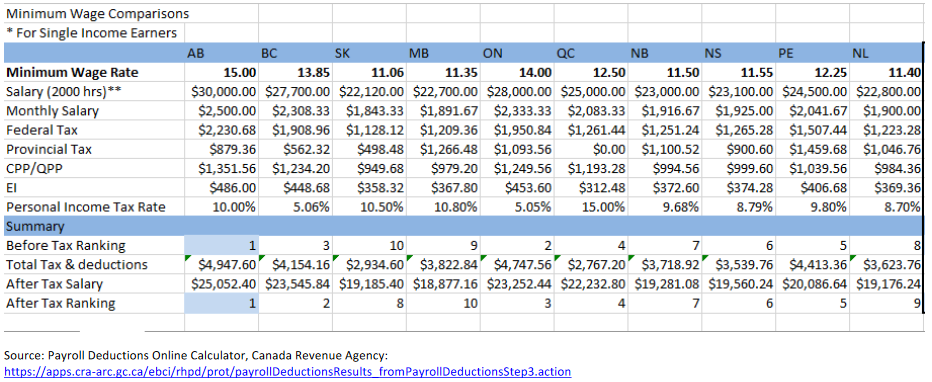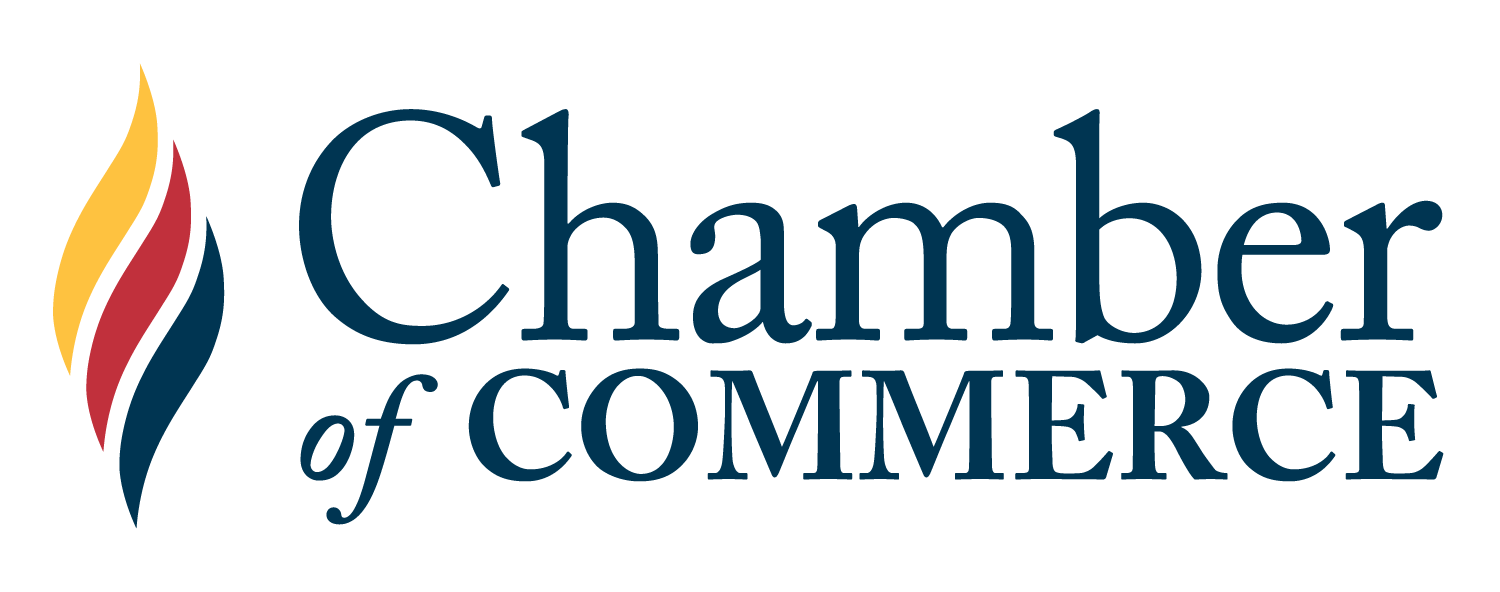Impacts of Significant Minimum Wage Increase (Co-Sponsored)

Impacts of Significant Minimum Wage Increase (Co-Sponsored)
Workforce Development - Provincial Policy
Sponsor: Lethbridge
Co-Sponsor: Medicine Hat
Issue
Alberta has the highest minimum wage rate in Canada at $15.00 per hour. While minimum wage increases are one of the ways to combat poverty, a robust solution should be applied, taking into consideration living wage variances across the province and rates of taxation on low income earners.
Background
All Alberta employers must pay their employees, including liquor servers and disabled persons, at least the minimum wage. The minimum wage in Alberta is set out in the Employment Standards Regulation and as of October 1, 2018 was set at an hourly minimum wage of $15.00 for most employees; a weekly minimum wage of $598 for many salespersons, including land agents and certain professionals; and a monthly minimum wage of $2,848 for domestic employees who
live in their employer’s home. As of June 26, 2019 students working 28 hours/week or less when school is in session must be paid a minimum of $13.00/hour. A general minimum wage of $15/hour must be paid for time exceeding 28 hours in one week. During school breaks students are to be paid $13/hour for all hours worked.
The table below shows the minimum wage rates across the provinces, including an after tax comparison. While Albertans earning minimum wage bring home the most after tax dollars compared to other provinces it should be noted that British Columbians, who are ranked third in before tax dollars, are ranked second in take home wages because of a more favourable tax environment for low income earners.
 Source: Payroll Deductions Online Calculator, Canada Revenue Agency:
Source: Payroll Deductions Online Calculator, Canada Revenue Agency:
https://apps.cra-arc.gc.ca/ebci/rhpd/prot/payrollDeductionsResults_fromPayrollDeductionsStep3.action
The law of demand dictates that when the price of labor rises, the quantity demanded will fall. That same law tells us that quantity demanded will decrease more in the long run than in the short run, as employers switch to labour-saving methods of production.
Workers who retain their jobs are made better off by increases to minimum wage, but only at the expense of unskilled or youth workers who either lose their jobs or can’t find a job at the legal minimum. If the minimum wage exceeds the prevailing market wage (determined by supply and demand), some workers will lose their jobs or have their hours cut, as employers will not pay a worker $15 per hour if that worker cannot produce at least that amount. If a worker loses a job or can’t find one, their earning income potential is zero. There is evidence that a 10 percent increase in the minimum wage leads to a 1 to 3 percent decrease in employment of low-skilled workers in the short run, and to a larger decrease in the long run.
Governments continue to promise low-skilled workers a higher wage; however, that promise cannot be kept if employers cannot profit from retaining those workers or hiring similar workers. Jobs will be lost, not created; and unemployment will rise as more workers search for jobs but can’t find any at the above-market wage. Additionally, most employers cannot simply raise prices to cover the higher minimum wage, particularly in the competitive services sector or in industries that are price-takers. Moreover, if the minimum wage cuts into profits, there will be less capital investment and job growth will slow.
Advocates of increasing the minimum wage rely on the idea that businesses are able but unwilling to pay higher wages to their employees. The hope is that these businesses will simply bear the increases in their profits, while employment and prices are negligibly affected. Unfortunately, most minimum wage earners work for small businesses, rather than large corporations. Small businesses face a very competitive market and often push profits as low as they can go to stay open. Minimum wage earners employed by large corporations would also be affected, because these corporations are under tremendous pressure from shareholders to keep costs low.
One of the primary reasons that minimum wage increases are typically considered by Governments, is to address living wage or poverty issues. Minimum wage is defined as the lowest amount employers can pay their employees by law, whereas living wage is an estimate of what workers need to earn to cover the actual costs of living in a specific community. However, minimum wage alone fails to alleviate poverty because it fails to address unemployment. Recent studies have shown that there is little to no relationship between an increased minimum wage and reductions in poverty. These studies find that, although some lower-skilled workers living in poor families see their incomes rise when the minimum wage increases, others lose their jobs or have their hours substantially cut.
Living wage rates in Alberta vary across the province with higher rates being found in large urban areas while smaller cities have lower rates. Interestingly, as an example, with the minimum wage increase on October 1, 2017, Medicine Hat achieved its living wage rate and yet poverty in the Southeast Alberta region is still a pressing issue and only highlights the need for a more robust and comprehensive strategy to address poverty reduction.
Most experts agree that a multi-pronged and multi-level process is needed to address and combat poverty, a task that cannot be addressed solely by increases to the minimum wage rate. Research and conclusions on the link between poverty and minimum wages are also highly contentious, with various arguments for and against a link. For this reason, any linkage between the minimum wage and poverty needs to be situated within the context of various other measures to address poverty, including but not limited to changes to taxation, social policy, housing, and skills training, etc.
Additionally, the most recent Thrive7 report solidifies that minimum wage should not be tied to “living wage”, as the living wage in each region in our province is drastically different, varying from $18.15 in Calgary to $13.65 in Medicine Hat.
As such, the minimum wage should be set to the minimum standard in Alberta to ensure a level playing field within all regions, so that our regions can remain competitive and that there isn’t a disparity created in the province due to unfairly legislated costs to the regions. It is not reasonable to equate that the same minimum wage will result in the same net impact across jurisdictions, nor is it reasonable to embark on decisions under the supposition that all regions in the province operate under the same “living wage” standard. There are varying factors in costs of living, benefits,
subsidies, and levels of taxation that are not accounted for in just a basic minimum wage comparison.
There must be a more robust conversation to ensure that a disproportionate burden on employers or other groups is not an unintended consequence of public policy and that a stronger framework for addressing low wages and poverty in Alberta is created.
Recommendation
The Medicine Hat & District Chamber of Commerce recommends the Government of Alberta:
1. Only revise the rate by a maximum percentage equal to the percent change in the Alberta Consumer Price Index, after conducting an annual assessment based on employment and economic conditions in Alberta;
2. Recognize that each region has a different living wage rate by ensuring that minimum wage is not tied to living wage and set the minimum wage rate standard accordingly and fairly to all jurisdictions;
3. Continue to provide a minimum of one years’ notice on any minimum wage changes implemented;
4. Establish an ongoing research program for data and information gathering and its subsequent analysis to address policy-relevant minimum wage issues, as well as alternative poverty reduction strategies.
1 https://www.alberta.ca/minimum-wage.aspx
2 Government of Alberta: http://work.alberta.ca/employment-standards/minimum-wage.html
2 Government of Alberta: http://work.alberta.ca/employment-standards/minimum-wage.html
3 https://www.labour.gov.on.ca/english/es/pubs/mwap/section_03.php
4 The Minimum Wage Delusion, And The Death Of Common Sense: http://www.forbes.com/sites/jamesdorn/2013/05/07/the-minimum-wage-
delusion-and-the-death-of-common-sense/
5 Effects on Business Employment and Consumers: http://www.alec.org/wp-content/uploads/Raising_Minimum_wage.pdf
6 Thrive Medicine Hat & Region – Strategy to End Poverty & Increase Wellbeing: https://www.thrivemh.ca/
Date Approved: May 2015
Date Renewed: May 2019
